How Keerthi Eswaran, rogue taxidermist, ‘animal lover’ and outlaw wildlife dealer ended up behind bars
WHEN Ginger Noodles the cat went missing from a Darwin animal shelter five years ago, nobody suspected the sick taxidermist who adopted him would end up being jailed as Australia’s most prolific wildlife dealer, writes CRAIG DUNLOP

True Crime
Don't miss out on the headlines from True Crime. Followed categories will be added to My News.
NOBODY knows precisely what fate befell Freckles, Ginger Noodles, Charliegh, Mittens and Eric, but chances are the five cats were among the hundreds of victims of Australia’s worst ever outlaw animal trader.
It would take years for the law to fully catch up with Keerthi Raja Eswaran, 35, a rogue taxidermist, wildlife poacher and outlaw specimen dealer who shockingly still sees himself as an “animal lover”.
In April 2014 Eswaran sauntered into a Darwin animal rescue shelter and adopted a cat, Eric. By the end of the month, he’d come back for two more, Charleigh and Mittens and had adopted Ginger Noodles and Freckles from a second shelter.
Eswaran seemed like a genuine animal lover, but it didn’t take volunteers long to suspect something was amiss.
Volunteers began to think something might have been amiss when they showed up at the addresses Eswaran had given them for routine two-week check-ins on the cats, only to have confused suburban homeowners to answer their doors and say they neither knew of Eswaran nor any adopted cats.
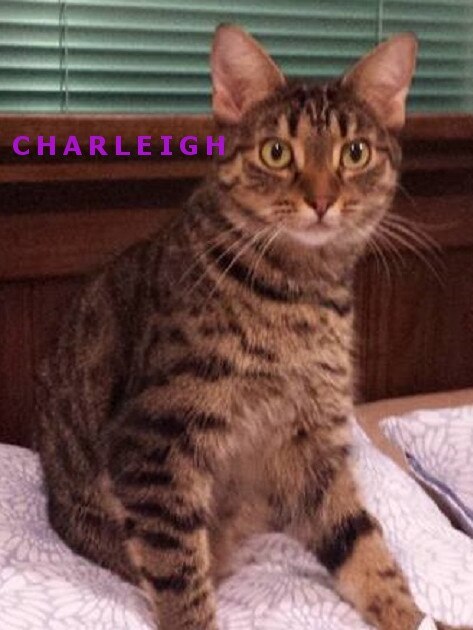
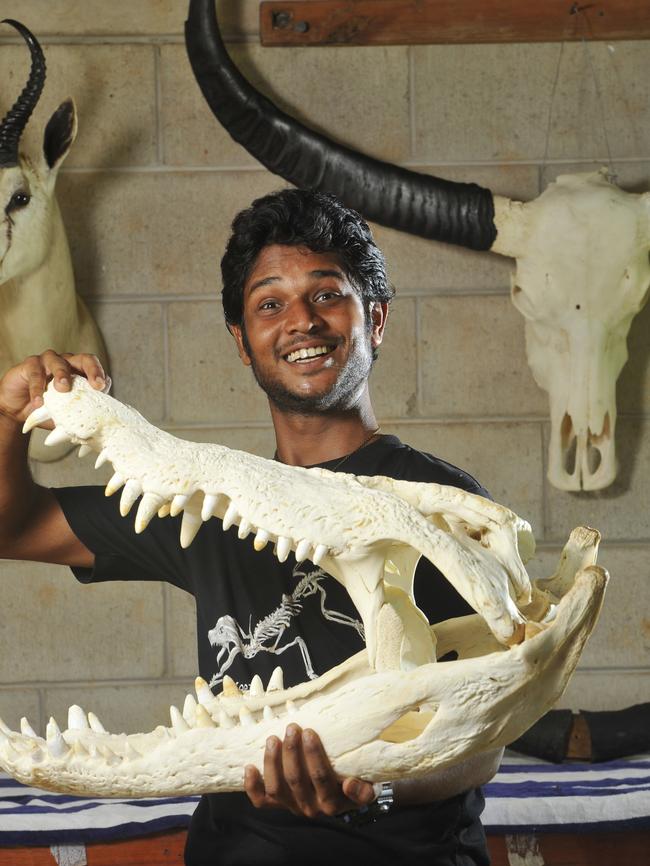
According to an online warning one of the shelters sent around, Eswaran had been “extremely evasive” and gave volunteers “number of different stories”.
“His story now … is that the cats were frightened off by a dog of a neighbour and he hasn’t seen them again,” the warning said.
“At this point we have no knowledge of the whereabouts of the cats or even if they are still alive.
“We suspect they are dead … ”
A 2013 NT News article raised even more concerns among the animal shelters, with Eswaran having given a reporter a tour of the suburban taxidermy studio he was then working out.
He boasted of having three chest freezers packed to the brim with roadkill, crocodiles, peacocks and domestic cats.
- JAILED: Keerthi Eswaran finally locked up
- PUSSY STUFFER: suspected cat taxidermist investigated
- RELATED: Eswaran selling skulls on Gumtree
Perhaps Ginger Noodles didn’t run away after all, but ended up in Eswaran’s deep freeze, destined to be turned into some kind of macabre household trinket.
The animal shelters reported their suspicions to NT Police, but Eswaran vanished and no charges were ever laid over the suspected cat killings.
A private investigator, hired by a Darwin animal lover at great expense, tracked him down in Queensland, where he was back in business as taxidermist.
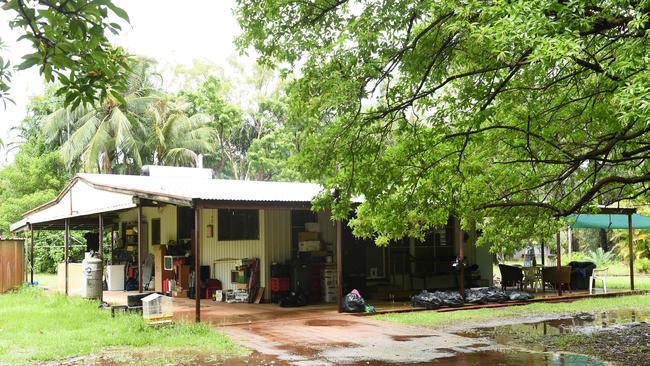
Little was heard of Eswaran until late 2016, when police pulled over his Nissan Patrol in Adelaide River.
What they found was a gruesome collection of hacked up animals, including a donkey head, two pelican heads, three wedge-tailed eagle heads and more than a dozen other birds.
By that afternoon, police had a warrant to search Eswaran’s house on Macleod Rd, Howard Springs, which wildlife authorities would later dub the “house of horrors”.
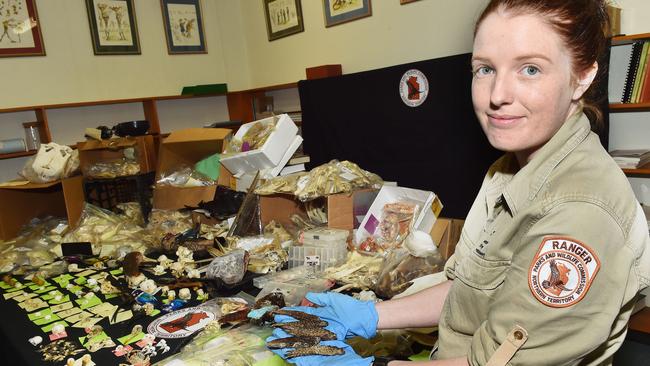
The house stank of a mixture of rotting flesh, acid and embalming chemicals, and by the time investigators were done, they had seized more than 1000 specimens from 91 species scattered around the house.
There was little apparent rhyme or reason to what Eswaran was collecting.
A week or so later, and a few kilometres away, rangers found bags of animal specimens on two tarpaulins under the Howard River Bridge on Gunn Point Rd, mostly dead birds but also a domestic cow head and three camel heads.
Two of the men Eswaran had been pulled over with in Adelaide River later told police the dumped animal heads were from the trip the group took to Central Australia, which ended with Eswaran’s apprehension.
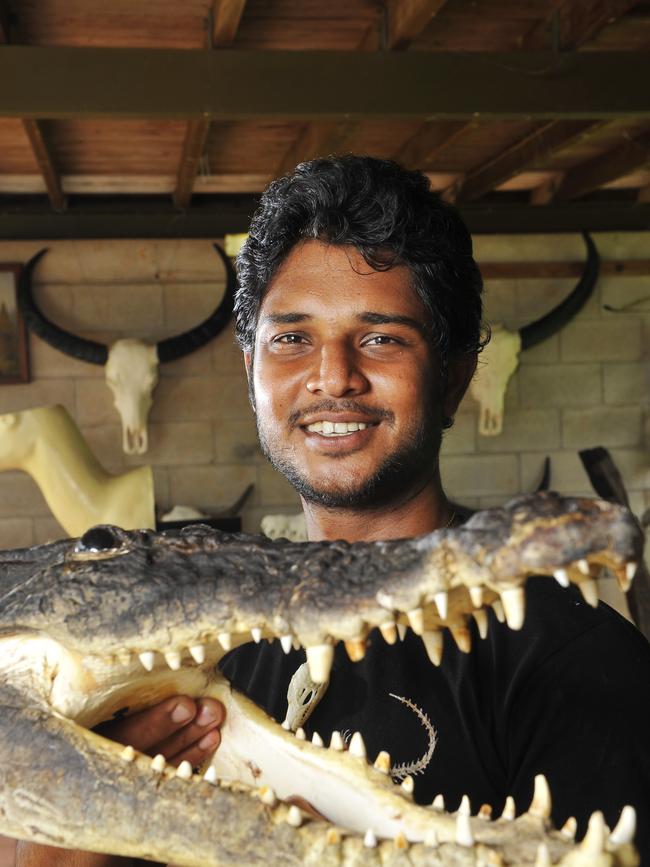
Eswaran’s lawyer, Peter Maley, would a few months later tell Darwin Local Court his client had never been in trouble with the law before and was an animal lover with a loyal clientele for his taxidermy business.
“It’s a bit of an oxymoron but he describes himself as a — he’s a genuine wildlife enthusiast,” Mr Maley said.
“He loves these animals.”
Eswaran found himself a sympathetic ear in Judge Dick Wallace, who said killing and stuffing wild animals could be a genuine, if unusual and illegal, “expression of your deep interest in, and knowledge of, the natural world”.
“It is not, in my view, contradictory any more than it was 100 or 150 years ago when that was the normal practice of the great naturalists who described most of the natural world for the rest of us to marvel at,” Mr Wallace said.

He also said the general public might not be too upset at some of the specimens Eswaran was found with.
“I don’t suppose anybody’s going to be terribly upset about a few orange footed scrub fowl getting knocked off. The more the better in my opinion …”
Mr Wallace at times nearly worked himself into a lather trying to imagine which of the animals Eswaran might have found as roadkill and which Eswaran might have needed to trap or kill.
“Now, you can see (a dozen or so) wallabies on the side of the road any morning when you drive down past Adelaide River,” Mr Wallace said.
“So it’s easy enough for me to believe that most of those have been picked up at the side of the road … but 15 varied trillers? I mean, I’ve never seen a varied triller on the ground let alone a dead one. They’re in trees. They trill about. Fifteen of them. A dozen rainbow bee-eaters. I mean, how do you get bee-eaters without shooting them?”
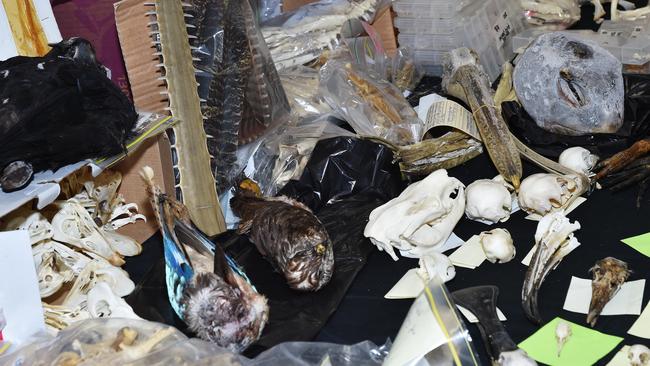
Wildlife officials were fuming at Mr Wallace’s acceptance of Eswaran as some kind of misguided naturalist, and his conclusion that it was “only in recent decades, really, that the only proper approach for a nature lover is to cuddle animals came into being”.
Parks and Wildlife officials who had spent months compiling a case against Eswaran were seething he wasn’t locked over what Mr Wallace described as “an unprecedented case, in terms of its scale”.
The officials had serious doubts about Mr Wallace’s conclusion Eswaran was unlikely to “do it again”.

Within three months, Eswaran was back at it, and began listing wildlife specimens on eBay. Within a year, he had $69,000 worth of specimens listed, some of which he had ready to sell and others of which he was able to get from suppliers and on-sell.
In mid-2018, Eswaran was found at the Palmerston post office trying to send a king colobus monkey skull and a red-tailed cockatoo skull to a customer in Illinois in the United States.
He also had ibis and scrub fowl skulls destined for a customer in Victoria, but investigators would end up intercepting both packages.
Australian Border Force investigators and officials from NT Parks and Wildlife, NT Police and the AFP and raided Eswaran’s house in Driver in October.
They didn’t find the veritable Noah’s ark that investigators had seized at Howard Springs the year before, but Eswaran’s shed was a grim sight.
Outside was a bucket with a foul sludge of rotten flesh and acid from Eswaran having used the powerful chemicals to remove the flesh from skulls.
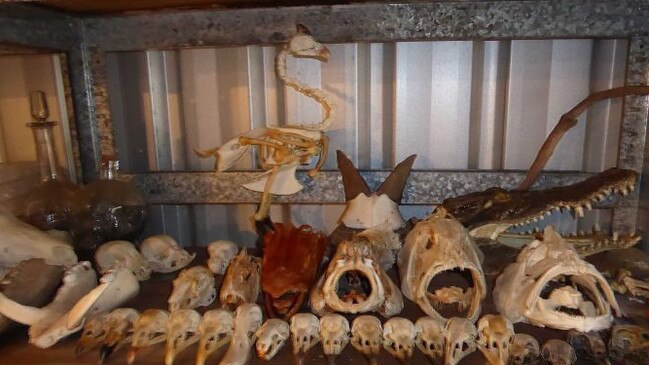
Inside was a shelf of animal skulls, including those of wombats he had travelled to New South Wales to hack off from roadkill, before travelling back to Darwin with the bloody heads packed in his suitcase.
An analysis of Eswaran’s phone showed he would go “offline” with past customers and was willing to act as a middleman and source everything from rat skeletons to lion skulls.
Eswaran’s cases peeled back the lid on the international online wildlife trade, which at best operates in legal grey areas and at worst is outright illegal.

Collectors from all over the world are willing, it turns out, to pay serious money for macabre trinkets, such as chipmunk tails, eagle feet, bird skeletons, and monkey skulls.
Others are willing to pay for a stuffed cane toad to have as a keepsake, or to have a beloved family pet stuffed to keep around the house instead of burying it in the backyard.
Eswaran’s second time around in court, Commonwealth Prosecutors played hardball, refusing to let him plead guilty in the Local Court and insisting charges be dealt with in the Supreme Court.
HURRY offer ends soon: GET earbuds worth $329 with a 12-month NT News subscription
Justice Peter Barr offered little of the sympathy Eswaran had previously enjoyed.
“Mr Maley has explained … that you perceive yourself to be a conservationist,”
Justice Barr said.
“That perception may reflect part reality but many conservationists would strongly oppose the things which you have done, particularly when it involves repeated breaches of the law.”
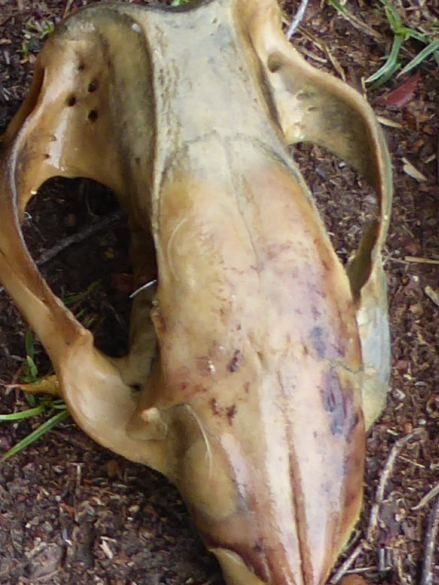
Justice Barr had to do a double take at Eswaran’s 350-odd previous convictions, all of which stemmed from the single prosecution in 2017, worried the number might have been a typo.
Now Australia’s most prolific wildlife criminal, Eswaran is languishing in Holtze Prison with a 23 month jail sentence, to be suspended after 14 months.
While Eswaran plans to return to India and leave behind the strict wildlife laws he has repeatedly fallen afoul of, the great unsolved question of his case remains: what fate befell Freckles, Ginger Noodles, Charliegh, Mittens and Eric?

Originally published as How Keerthi Eswaran, rogue taxidermist, ‘animal lover’ and outlaw wildlife dealer ended up behind bars


